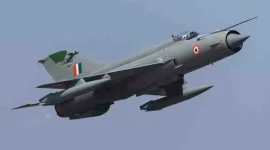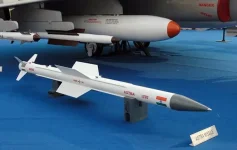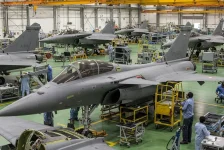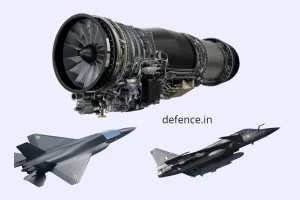- Views: 2K
- Replies: 9
India is preparing to unveil the Tejas Mk2, a next-generation fighter jet, in 2025, marking a significant advancement in the nation's indigenous aerospace capabilities.
This event comes almost thirty years after the rollout of the first Light Combat Aircraft (LCA) Tejas prototype in November 1995, demonstrating India's continued progress in developing its own defense technologies.
The unveiling of the original Tejas prototype in 1995 represented India's determination to decrease its reliance on foreign-made military aircraft and establish a strong domestic defense industry.
The LCA program, a collaborative effort between the Defence Research and Development Organisation (DRDO) and Hindustan Aeronautics Limited (HAL), encountered various obstacles, including technical difficulties, project delays, and initial doubts.
Despite these challenges, the Tejas program persevered, transforming the initial design into a fully operational combat aircraft. The Tejas Mk1 and Mk1A variants are currently in active service with the Indian Air Force (IAF).
The Tejas Mk2, scheduled for rollout in 2025, signifies a major technological advancement. This 4.5-generation multi-role fighter is equipped with cutting-edge features, including an Active Electronically Scanned Array (AESA) radar, which provides superior situational awareness and tracking capabilities compared to traditional radar systems.
The Mk2 also boasts upgraded avionics and refined aerodynamics for improved flight performance.
Furthermore, a more powerful engine and a greater payload capacity enable the Mk2 to carry a larger and more diverse array of weapons and equipment, allowing it to meet the IAF's changing operational needs. The Ministry of Defence, India states that Active Electronically Scanned Array Radar is indigenously designed and developed.
For the Indian Air Force, the Tejas Mk2 is expected to substantially enhance operational capabilities. Its sophisticated features will improve the IAF's ability to perform air superiority, ground attack, and reconnaissance missions.
The Mk2 is also designed for better interoperability with other aircraft and systems within the IAF and potentially with allied forces.
The upcoming rollout of the Tejas Mk2 is a source of national pride and a moment for reflection on India's technological journey. It underscores the nation's capacity to conquer challenges, foster innovation, and produce advanced defense systems.
The progression from the first Tejas prototype in 1995 to the forthcoming Mk2 in 2025 highlights India's steadfast dedication to aerospace excellence and its aspiration to become a major player in global defense technology.
This milestone not only bolsters the IAF's fighting strength but also sets the stage for further progress, contributing to the long-term security of India's airspace.




